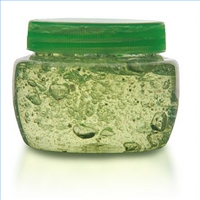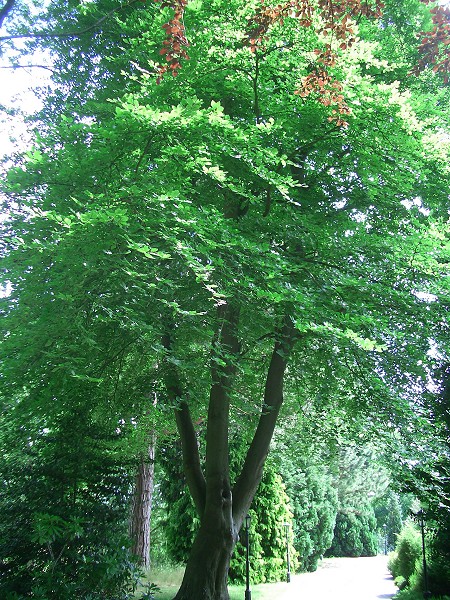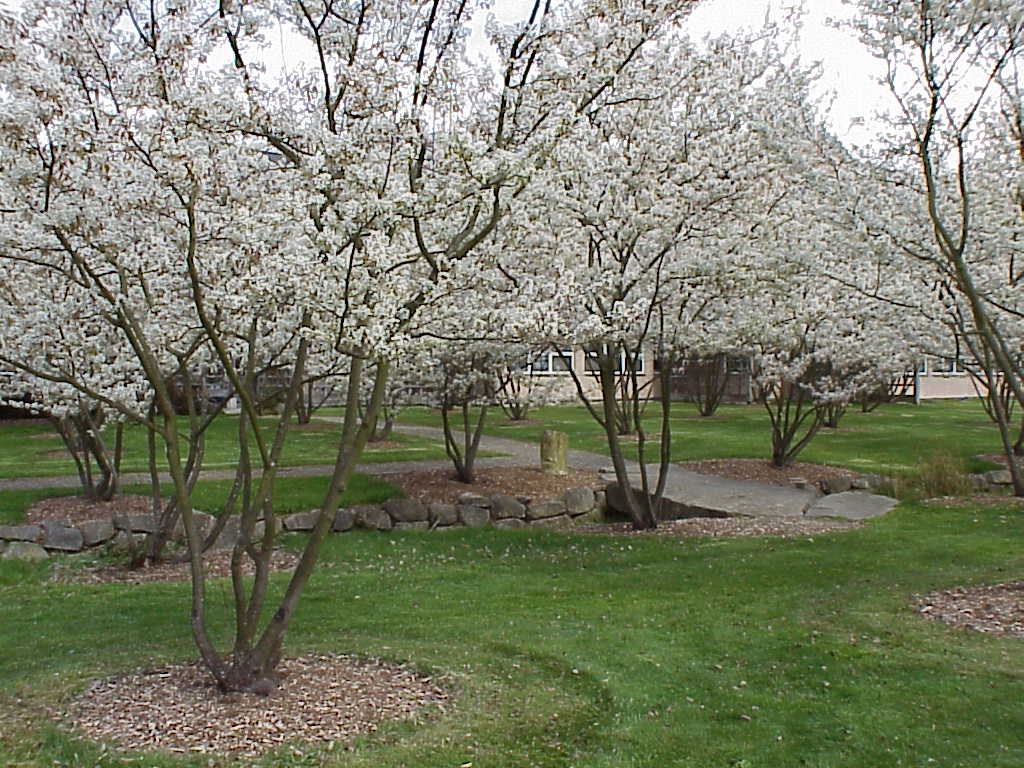"It's actually the spirit helping the spirit;
it is the doctor, the bed, the potion."
-Franz Grillparzer (1791-1872)
Medications and Potions
Everything has a history, and some of the most interesting history relates to the things we find in our bathrooms and medicine cabinets. Soap, nail polish, laxatives, and aspirin are so common that we rarely think about anything other than their price and effectiveness. Versions of these were available to consumers several millenia ago. Written records from the beginnings of Western civilization-Egypt, Greece and Rome-are filled with references to potions and medications similar to those we use today. Our knowledge of earlier use is limited by the fact that recorded history only goes back 6000 years before the present. One common theme that emerges is that while our ancestors often were on the right track with their natural remedies, they also used harmful substances-makeup that would poison the blood so slowly it was not suspected as a killer, toothpastes that destroyed tooth enamel, depilatories that left scars. On the other hand, nature's pharmacy sometimes yielded effective remedies-willow bark extract, which acts like aspirin, was used as a painkiller by the Romans. Many potions and medicines used long ago may have worked, but we would not want to use them today. Iron Age men used pine resin for hair gel, Romans rinsed their mouths with urine, cavemen shaved with volcanic glass. People did the best they could with what they had. They wanted to shave, or along the Nile, felt they had to for health reasons, so they formed the articles with what they had on hand. Improvements came with advances in technology. Not until the mid 19th century, with the science of chemistry and medicine firmly developed, did modern potion-making begin to take shape, and not until the 20th century did big industry take over.
Hygiene
This is one section sure to be an eye-opener to everyone. Soap, deodorant, toothpaste, shaving cream-those bathroom products that we depend upon every day to make us feel clean and fresh, have been around in one form or another for a long time. Toilet paper was not widely used until the late 19th century, but there were various substitutes that we may consider unpleasant today. The most basic hygiene product, soap, has been around since the earliest civilizations; chemical soaps have only been in use for the last 150 years.
Soap
Ingredients then and now:
600 BC-goat tallow and wood ashes
Today- vegetable oils, glycerin, sodium hydroxide
It seems to possess magical properties, a bar of soap. We rub our dirty hands on it and they come clean, and miraculously so does the bar of soap, ready for the next dirty user. The need to clean oneself seems instinctive and it's not surprising that the first cleansing agents came from plants. In the second millenium BC, the Hittites of Asia Minor washed thenselves with water and ashes from the soapwort plant, which contains a natural cleansing agent called saponin. Ashes from this and other plants form soluble salts called alkalines that have cleaning properties.
Actual soap came along in about 600 BC, thanks to the seafaring Mediterranean people, the Phoenicians. Without understanding the chemisty, they developed a soap made by boiling ashes, water and goat fat. What remained after evaporation was a waxy substance-soap.
Deodorant
The effort to make natural human body odors disappear seems to have been around as long as civilization. The Sumerians of the fourth millenium BC, who left records, wrote of their deodorants. Ancient Egyptians used perfumed oils, with a mixture of cinnamon and citrus, and a time-release device-a cone of perfumed fat that slowly melted in the heat. Greeks and Romans used perfumed oils.
Shampoo
from a Hindi work meaning to press or massage
Early shampoos used citrus extracts
Dry shampoo was a powder that absorbs oil
Products for cleaning hair date from as far back as soap, and the ancients probably knew as well as we that soap just didn't wash. The problem is not so much to get rid of the dirt but the sebum, an oil produced by glands in the skin. The early Egyptians came up with a smart solution-they washed their hair with a mix of citrus juice and a little soap. The citric acid cuts through the sebum. By the Middle Ages, a more refined hair product had been developed by combining soap with soda (sodium carbonate) or potash (potassium carbonate), from which soap itself is often made.
By the late 18th century, posh British salons offered hair washing massage called 'shampoo', from the Hindi for massage. They offered therapeutic massage or a champi (shampoo). Hairstylists used special preparations of shaved soap boiled with aromatic herbs such as jasmine and sandalwood.
Hair gel
The remains of an Iron Age man living in central Ireland in the third to fourth century BC were found. He was possibly the earliest known user of hair gel, made of plant oil and pine resin from trees that grew in Spain and southwestern France.
Toothbrush
Early model: ancient Egyptian chewstick
Earlier societies tried at least as far back as 3500 BC to clean their mouths. The Babylonians of that era rubbed their teeth with chewsticks: pencil-length twigs frayed at one end. They have been found in Egyptian tombs from 3000 BC, and are still used in some tropical areas. The sticks were taken from trees such as
Garcinia kola, Salvadora persica, and
Gouania lupiloides. The chewing released a mouth freshener and an aromatic odor, and the non-frayed end could be used as a toothpick.
The first real toothbrushes were invented by the Chinese in the 15th century. The handles were made of bamboo. About 300 years later they made their way to Europe. A pioneering dentist, Fenchan Pierre Fauchard recommended in a 1728 publication that people rub their teeth and gums daily with a piece of natural sponge.
Toothpaste
Early teeth cleaners: pumice stone, urine
The Egyptians of 2000 BC used a toothpaste made of powdered pumice stone and vinegar. For the next 3000 years this formula-or variations on it-were used. The pumice whitened the teeth, but abraded enamel, promoting tooth decay. The Romans used urine instead of vinegar; it contains ammonia, which is an ingredient in some modern toothpastes to clean the teeth. The Greeks and Romans tried other abrasives-powdered charcoal and bark freshened the breath, the toothpaste was likely applied with a chewstick. The Romans also liked urine as a mouthwash, the wealthy imported theirs from Portugal.
Around 1000 AD Persians were cautioning toothpaste users against harsh abrasives. They liked gypsum, flint and honey. Not until the 1800s was sodium bicarbonate added, as a non-abrasive whitener to toothpaste.
Shaving Cream
Soap and water worked for hundreds of years. The soap could be churned up to a good, thick lather that held moisture in place and eased passage of the razor over skin. By the early 1800s special soaps for shaving were on the market. One of the first widely available was a walnut oil military shaving soap, a foaming tablet introduced in 1840. The viscosity and moisture-retaining properites of foam made it especially suitable as a shaving aid. The soap was placed in a cup, water was added, a brush was used to stir up a lather, which was then applied to the face.
Toilet Paper
An item we consider a necessity today was unheard of 150 years ago. The use of paper for personal hygiene can be traced to the first century, but it was rare until paper became more common aorund the 18th century. Ancient Romans used sponges on a stick, then replaced them in a bucket of brine. People preferred wool, cotton or lace, but used whatever was handy. Early Americans favored the corn cob. As paper became widely available, bathrooms and outhouses were generally equipped with old newspaper, flyers and catalogs.
Tampons
To absorb menstrual blood, Egyptian women used soft papyrus or pellets of linen held together with gum arabic. In the 5th century BC, Greek physician Hippocrates wrote that women used lint wrapped around a sliver of wood. The ancient Romans often used wool, the Japanese paper, and Indonesians vegetable fibers, and the equatorial Africans grass. Through the 19th century, American women used whatever they had-old rags or towels that could be washed and reused.
Beautification
Early cosmeticians were inventive in finding natural products that safely enhanced beauty
Ancient kohl, used to outline eyes in Egypt, contained local burnt almonds, applied with wood
Egyptian lipstick contained vegetable oils
Kohl was also used on children to prevent eye diseases.
Henna is a reddish dye that was available to many ancient cultures and was most likely one of the earliest lip paints.
Rouge
Early ingredients: mulberry, roots, wine dregs
Several early rouges, like other cosmetics, date from several thousand years BC. They were applied to cheeks or lips, made of mulberry, seaweed, other vegetation, colored with polderos, a root that Greek women used. Similar to alkanet and henna, the red dye gave non-courtesans one of their few options for beautification. Roman women preferred covering their cheeks and lips with dye made from red ocher and wine dregs.
Foundation
Honey and beeswax were affordable ingredients for ointments and foundation. During the lean years of World War II, English women often used vegetable oil as a foundation for facial powder.
Nail polish
Ancient Egyptians dyed their fingernails with henna and other natural plant dyes, but the first paint for the nails was developed in China around 3000 BC. It contained beeswax, eggwhite, vegetable dyes, gum arabic.
Ancient Greeks favored light-colored hair; to turn locks golden, they sprinkled yellow pollen, flour and gold dust in their hair. Sunlight was also popular for making hair fair. In the fourth century BC, men would wash their hair with a special ointment, then sit bareheaded in the sun by the hour, waiting for their hair to turn a beautiful golden blond. At the same time, Roman men liked dark hair, but not if it went gray; they used a black dye of boiled leeks and walnut shells. In the first century AD, women bleached their hair by washing it with a soap made of beechwood ash. The Italian court in the 16th century influenced a preference for yellow and golden hair, for which they used a plant-based dye.
Wigs
Egyptian wigs were made from palm
Palm fibers were used to make elaborate wigs, braided or curled from at least 3000 BC. The Egyptians held them in place with beeswax.
Perfume
Descended from incense, early use of scented oils: bathing and embalming
Perfumery began more than 8000 years ago with burning incense at religious ceremonies. The word perfume is from the Latin, 'per' (through) and 'fumus' (smoke). The fragrant gum resins and woods were often burned to cover the smell of sacrifices. Frankincense, myrrh, spikenard and cassia (a cinnamon bark) were typical ingredients.
By 3000 BC, the Egyptians and Sumerians of Mesopotamia were using scented oils for both embalming and bathing. Essences of iris, jasmine, hyacinth, honeysuckle and cardamom would be fixed in animal or vegetable oils and applied liberally. The Greek women applied perfumes copiously, such as rose and gillyflower (carnation) perfumes made from the flowers: so also was the perfume called Susinon-namely lilies, also the bergamot mint and tufted thyme, kypros, and saffron. The earliest Eau de perfume was 25 percent fragrant oils, cologne 3 percent.
A light, alcohol-based perfume was named cologne, and made by blending orange bitters, lemon spirits, and oil from bergamot fruit.
Depilatories
Less toxic depilatory creams were historically made from medicinal plants such as bryonia.
A 19th century home recipe for a depilatory uses polypody of the oak, where it is cut into very small pieces and added to white wine in hot water or a vapor bath.
In the late 1800's, there was an early form of waxing, by spreading galbanum, a resin. Ancient techniques were natural, such as sugaring, from the Middle East.
 Singing Nettles Herbal Clinic
Singing Nettles Herbal Clinic by
Amanda Dainow is licensed under a
Creative Commons Attribution-NonCommercial-NoDerivs 3.0 Unported License.
Based on a work at
singingnettles.blogspot.com.
Permissions beyond the scope of this license may be available at
http://singingnettles.blogspot.com/.
©ALL TEXT AND IMAGES COPYRIGHT






















